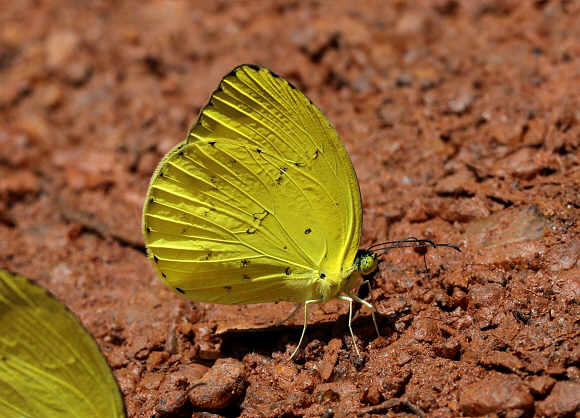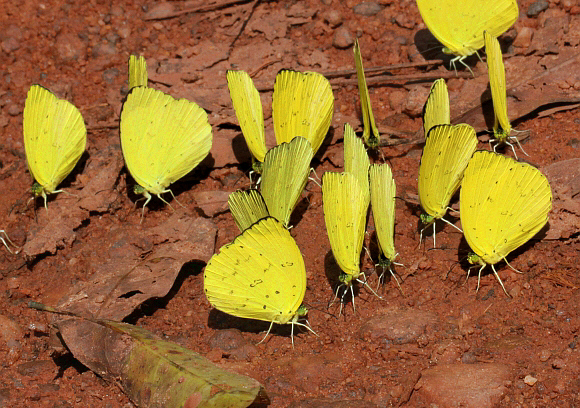
Introduction
The Grass Yellows are all fairly small butterflies, readily recognised by their bright yellow wings and their habit of gathering in small groups on patches of damp sand or soil. Despite their name, none of their caterpillars feed on grasses – the name is derived from the fact that most species are found in disturbed grassy habitats.
Eurema are among the most familiar of tropical butterflies. There are 70 known species worldwide, of which 36 are found in the Neotropical region, 13 in North America, 10 in Africa, 25 in the Oriental region and 10 in Australia / Papua New Guinea. Many are migratory in behaviour and the ranges of several such as hecabe overlap into in 2 or more of the zoogeographical regions.
Eurema senegalensis can be confused with hecabe, but is larger. On the upperside hindwing hecabe has a narrow black margin, whereas senegalensis has a series of tiny black dots.
Eurema senegalensis is found across forested regions of Africa from Sierra Leone to Tanzania and Zambia. Despite its name, senegalensis does not occur in Senegal.
Habitats
This is a forest species found mainly along logging roads and in disturbed areas where the larval foodplants flourish.
Lifecycle
The spindle-shaped eggs are straw coloured when first laid, but turn darker before hatching. They are laid singly on the upper surface of leaves of the foodplants Acacia and Cassia ( Fabaceae ).
Adult behaviour
Males congregate to imbibe mineralised moisture from damp sandbanks, often in scores. Females are more discreet in behaviour, normally being seen singly when nectaring.

